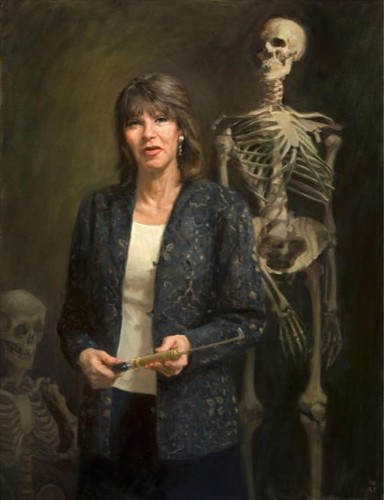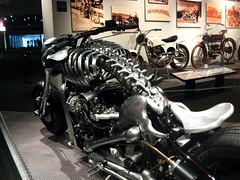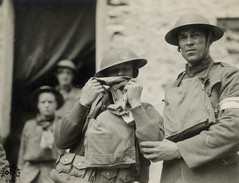Call for Papers
Exploring War and Conflict Through Oral History
Date: 1 May 2009
Location: The Library of Congress, Washington, DC
Sponsors: OHMAR (Oral History in the Mid-Atlantic Region)
Veterans History Project, American Folk Life Center, Library of Congress
War and conflict have been a formative part of United States history during the twentieth century, a trend that has continued into the new millennium. Since World War II, oral history has become a progressively more valuable tool in exploring the causes of war; the fierce national and international debate over the efficacy of waging war; the experiences of the combatants and civilians caught up in the conflict; and the social, political, and economic consequences of war. Drawing on this rich history, OHMAR and the Veterans History Project are soliciting papers for a conference that explores war and conflict through the use of oral history.
The program committee is seeking proposals for individual papers or complete panels that focus on the use of oral history in documenting the impact of war and conflict on world history during the twentieth and twenty-first centuries. Proposals for individual papers should be based on a twenty-minute presentation; complete panels should incorporate three papers within a panel lasting ninety minutes.
Proposal Format
For individual proposals, submit a one-page abstract, a one-page vita or resume, and a short (100 words or less) presenter bio. If proposing a three-person panel, submit a title, a session abstract of not more than two pages, and a one-page vita or resume and short bio for each participant.
Proposals should be postmarked or emailed by 15 February 2009. We prefer that proposals be sent by email. Email the cover sheet and proposal below as one complete electronic document in Microsoft Word to oralhistoryofwarandconflict@gmail.com. The program committee will acknowledge the receipt of incoming proposals as they are received. If you have questions, email oralhistoryofwarandconflict@gmail.com or contact John Lonnquest, program committee chair, at 703-428-6563. Applicants will be notified by 1 March 2009 if their proposals are accepted.
Technical Support
All of the conference facilities will be equipped with computers and LCD projectors. As part of their proposals, presenters should indicate their audio and visual support requirements. Please be as specific as possible so the program committee can properly evaluate the resources required. Please contact the conference program committee at oralhistoryofwarandconflict@gmail.com if you have any questions.
Cover Sheet
Exploring War and Conflict Through Oral History
Library of Congress
1 May 2009
Hard copy proposals should include five copies each of the cover sheet, panel proposal (if applicable), individual proposals, bios and individual resumes. We prefer emailed proposals. Be sure to read the Call For Papers to ensure you have met all requirements. Please type or print clearly.
Panel or Paper Title: ________________________________________________
AV and space needs: ( ) VHS player/monitor ( ) DVD player/monitor ( ) LCD projector
Other (describe thoroughly): ______________________________________________________
______________________________________________________________________________
AV requests must be indicated at this time. Please check with your panel members before submitting your proposal.
Panel organizer or paper presenter's name: __________________________________
E-mail: _____________________________ Affiliation ________________________________
Complete Mailing Address: _______________________________________________________
______________________________________________________________________________
City: _______________ State: ________ ZIP Code________ Country: _________
Work phone: ________________ Home phone: ________________ FAX:____________
If proposing a panel, please provide the following information as well.
Chair's Name: ________________________________________________________
First MI Last
E-mail: __________________________ Affiliation: __________________________________
Complete Mailing Address: _______________________________________________________
________________________________________________________________________
City: ______________ State: _______ ZIP Code: _______ Country: ___________
Work phone: _______________ Home phone: ________________ FAX: ___________
Commentator (if desired):____________________________________________
First MI Last
E-mail: ____________________________ Affiliation: ___________________________
Complete Mailing Address: _______________________________________________________ ______________________________________________________________________________
City: ______________ State: _______ ZIP Code: _______ Country: __________
Work phone: _______________ Home phone: ________________ FAX: ____________
Panelist: ____________________________________________________________
First MI Last
Paper Title: _________________________________________________________________
________________________________________________________________________
E-mail: ___________________________ Affiliation: ____________________________
Complete Mailing Address: _______________________________________________________ ______________________________________________________________________________
City: ______________ State: _______ ZIP Code: _______ Country: ____________
Work phone: _______________ Home phone: ________________ FAX: ____________
Panelist: ____________________________________________________________
First MI Last
Paper Title: __________________________________________________________________
________________________________________________________________________
E-mail: ____________________________ Affiliation: _________________________________
Complete Mailing Address: _______________________________________________________ ______________________________________________________________________________
City: ______________ State: _______ ZIP Code: _______ Country: ___________
Work phone: _______________ Home phone: ________________ FAX: ____________
Panelist: ____________________________________________________________
First MI Last
Paper Title: ____________________________________________________________________
______________________________________________________________________________
E-mail: ______________________________Affiliation:________________________________
Complete Mailing Address: _______________________________________________________ ______________________________________________________________________________
City: ______________ State: _______ ZIP Code: _______ Country: ___________
Work phone: ______________ Home phone: ________________ FAX: _________________
Proposal packages should be emailed to: oralhistoryofwarandconflict@gmail.com
Written proposals should be mailed to:
John Lonnquest
US Army Corps of Engineers
Office of History
7701 Telegraph Road
Alexandria, VA 22315
Cover sheet and proposals must be postmarked or emailed by February 15, 2009


































